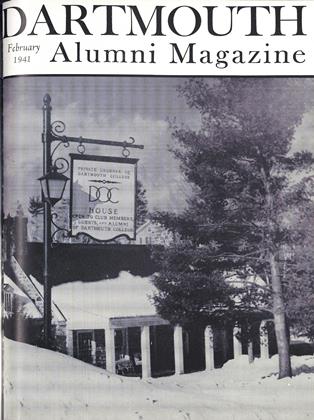, byLeroy A. Shattuck Jr. '35. The Johns Hop-kins Press, 1940. p. 145.
To THOSE who are interested in the challenging problems of public indebtedness, Dr. Shattuck's study comes as a valuable and welcome addition to the literature of municipal finance. The plan of the manuscript is well conceived and excellently carried out; careful scholarship is matched by clarity of style. Despite one's hesitancy to use that unfortunately, all too often overworked phrase "a contribution to knowledge," the reviewer is convinced that the author's analysis of the nature of municipal indebtedness (chapter IV) truly deserves to be so designated.
The purpose of the study is to analyze the effectiveness of the debt-to-property ratio as a technique for limiting the size of municipal debts. Attention is concentrated upon the operation of this control instrument in an area in which the defects of the method have been most apparent—New Jersey.
Dr. Shattuck treats of the more commonly recognized weaknesses which inhere in the debt-to-property ratio—the problem of overlying indebtedness, circumventing the limitation by changing assessments, and the artifice of excluding certain specific types of debts from the restriction—in chapters 5, 6, and 7. It is in chapter 4 however, that the fundamental weakness of this technique is laid bare. The illusion, held by so many, that if a municipal debt can but be maintained at a given level, the service charges on that debt automatically remain constant, is shattered. Through the use of a series of hypothetical cases the implications of both a constant debt and a constant debt burden are examined. It is pointed out that a debt of, say, $100,000 at any given time may entail varying debt charges even though the interest rate and the rate of amortization are the same. No mechanical limit alone can possibly be established which will provide effective control of municipal debt.
The author concludes that purposeful debt control requires the creation of an administrative body, which while making use of some sort of mechanical regulator as a guide to action, would not be bound so rigidly by this impersonal mechanism, that independent action were denied it. This central agency would require certain basic principles upon which to formulate policies; and in working these out, it is possible that the debt-to-property ratio, in a modified form, would prove useful.
The December issue of Print, a QuarterlyJournal of the Graphic Arts, contains an article by Ray Nash A Built-in Program—Harvard's Department of Printing and GraphicArts.
Professor Harold M. Bannerman is the author of New Hampshire Mineral ResourceSurvey, Part I, General Summary, which has been published by the N. H. State Planningand Development Commission; and of LepineLake Area Destor Township, Abitibi County, published as Geological Report No. 4 of the Department of Mines, Quebec, Canada.
 View Full Issue
View Full Issue
More From This Issue
-
 Article
ArticleClassicist Not Without Honor
February 1941 By Donald Bartlett '24 -
 Article
ArticleA Kind and Comfortable House
February 1941 By S. C. H. -
 Article
ArticleThe Undergraduate Chair
February 1941 By Charles Bolte '41 -
 Class Notes
Class Notes1924*
February 1941 By ALFRED A. ADAMS JR. -
 Class Notes
Class Notes1939*
February 1941 By ROBERT W. GIBSON -
 Class Notes
Class Notes1921*
February 1941 By CHARLES A. STICKNEY JR.
Books
-
 Books
BooksShelflife
July/August 2008 -
 Books
BooksRACIAL FACTORS IN AMERICAN INDUSTRY
April 1931 By E. K. Hall -
 Books
BooksTHE ROAD BACK TO PARIS
March 1944 By Herbert F. West '22 -
 Books
BooksUNITED STATES ECONOMIC HISTORY: SELECTED READINGS.
MARCH 1965 By RICHARD S. BOWER -
 Books
BooksBlack Pawl
February, 1923 By W. B. P. -
 Books
BooksBUSINESS RESEARCH AND REPORT WRITING.
JUNE 1965 By WILLIAM M. SAYRE '37, T'38

